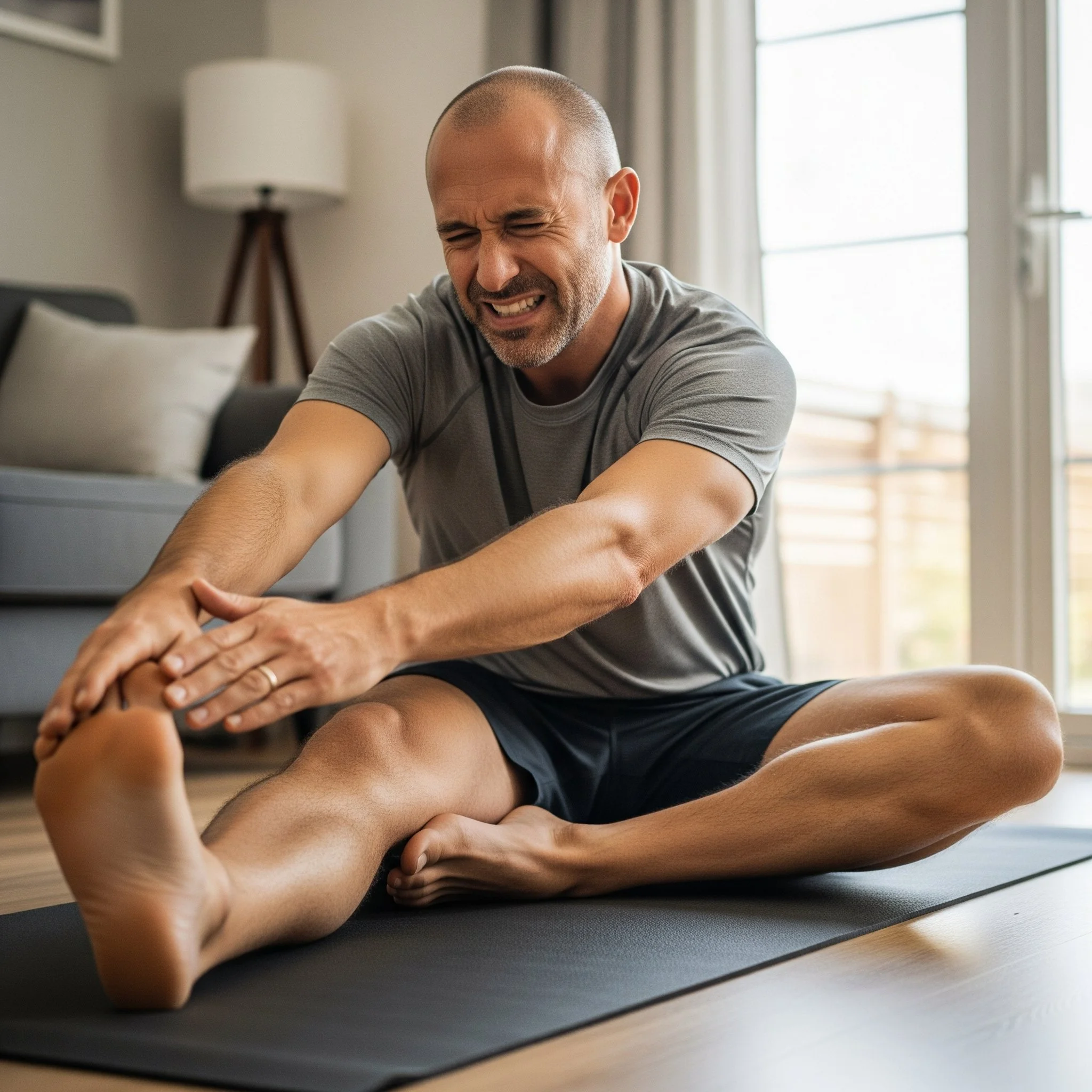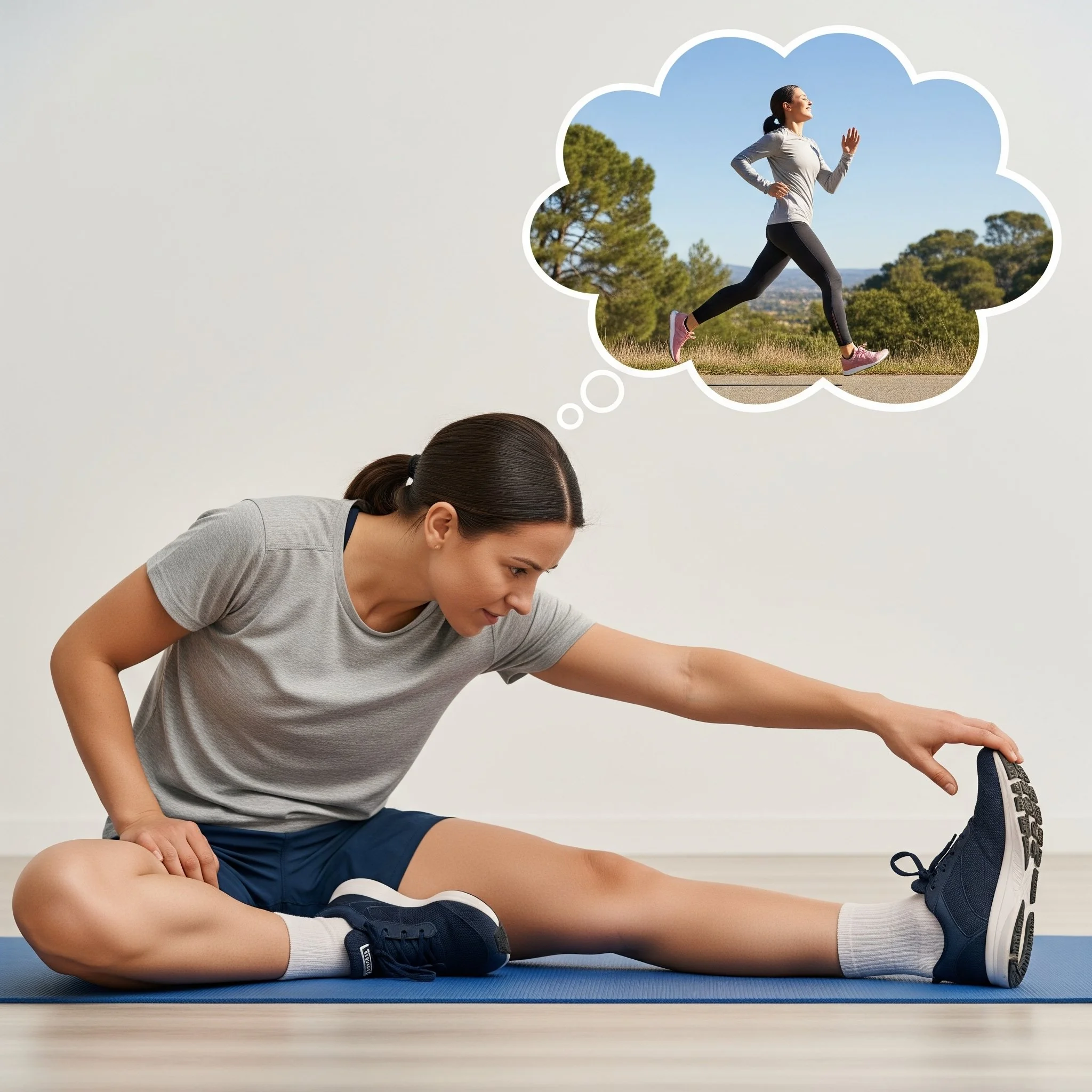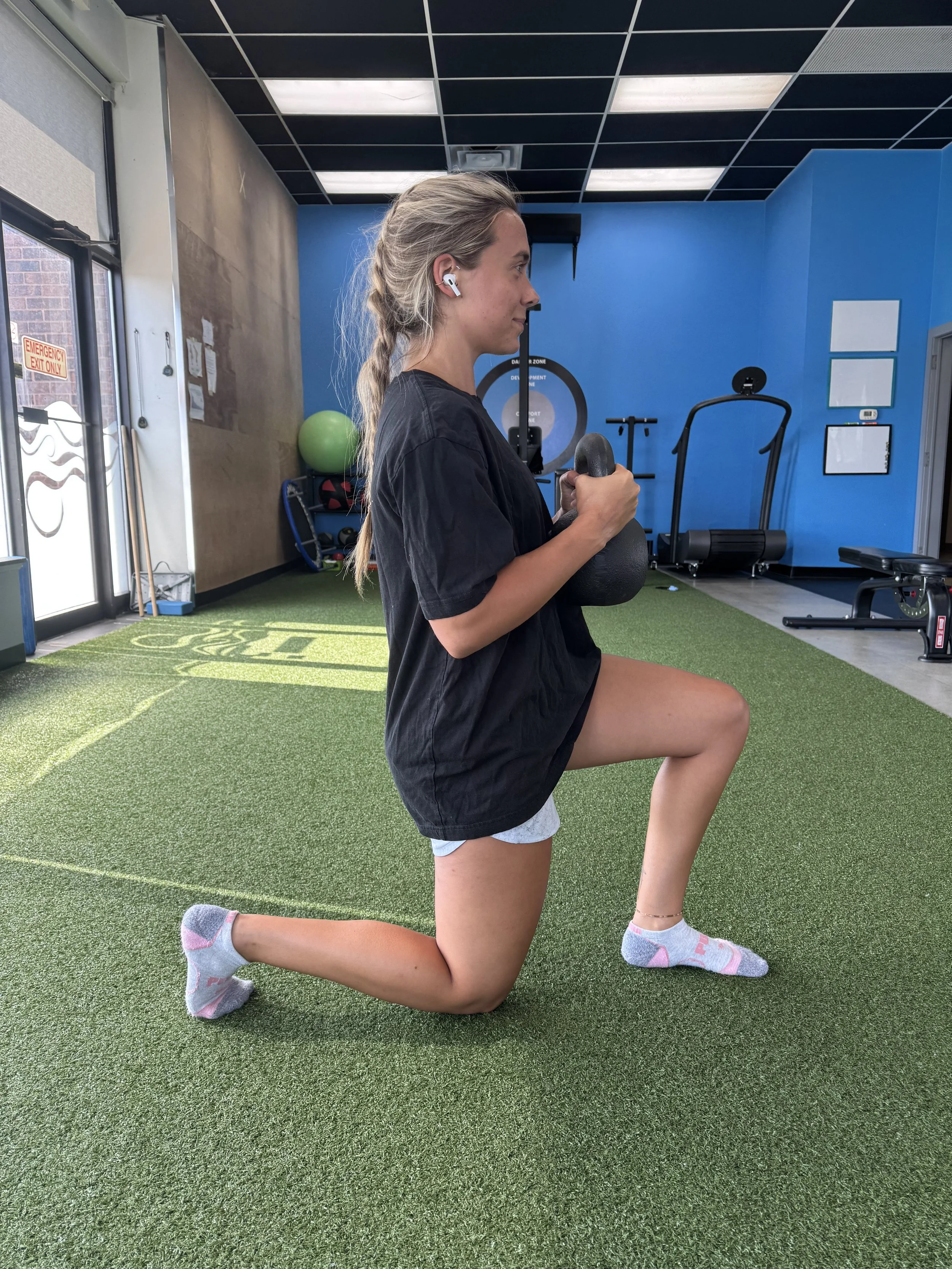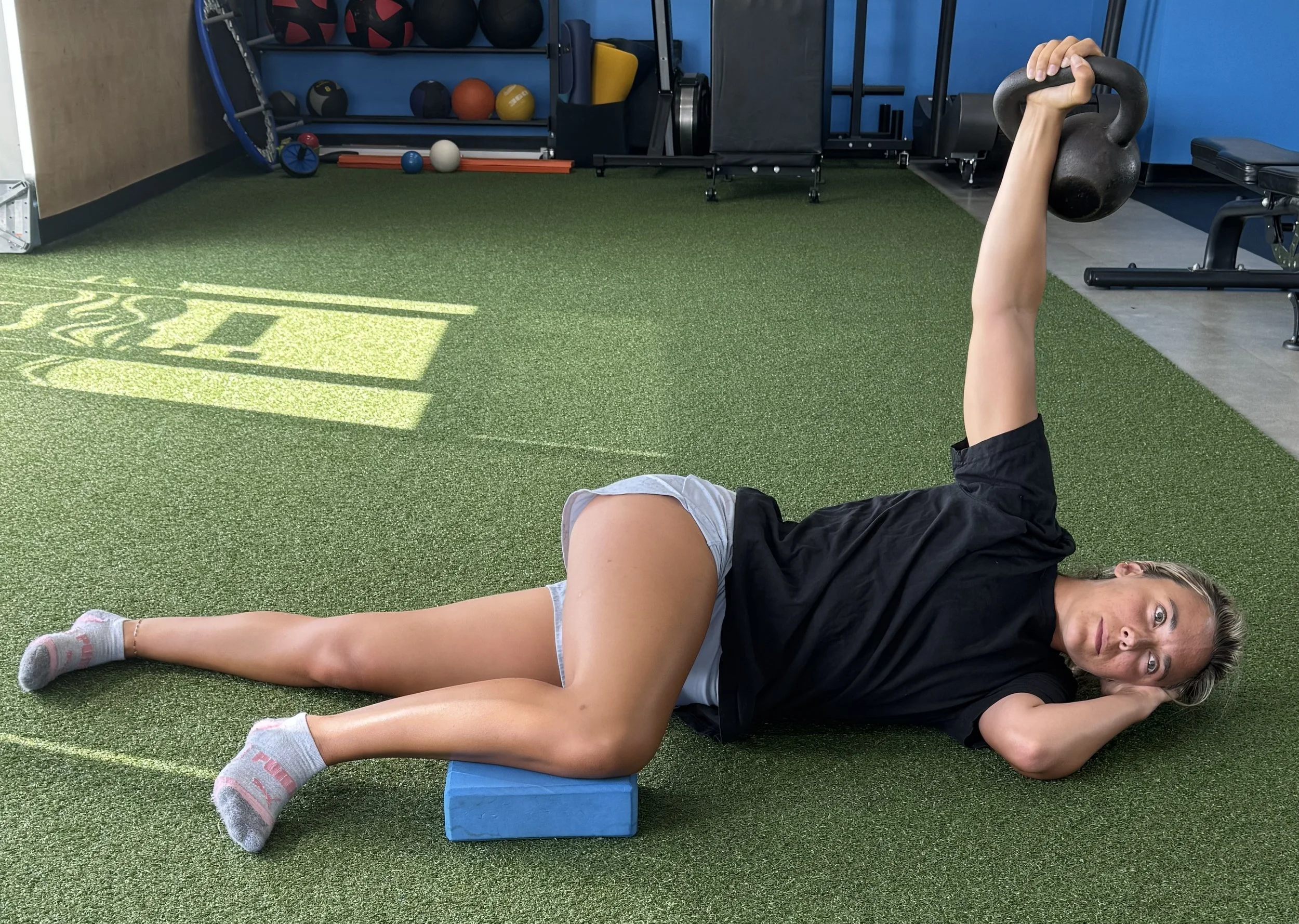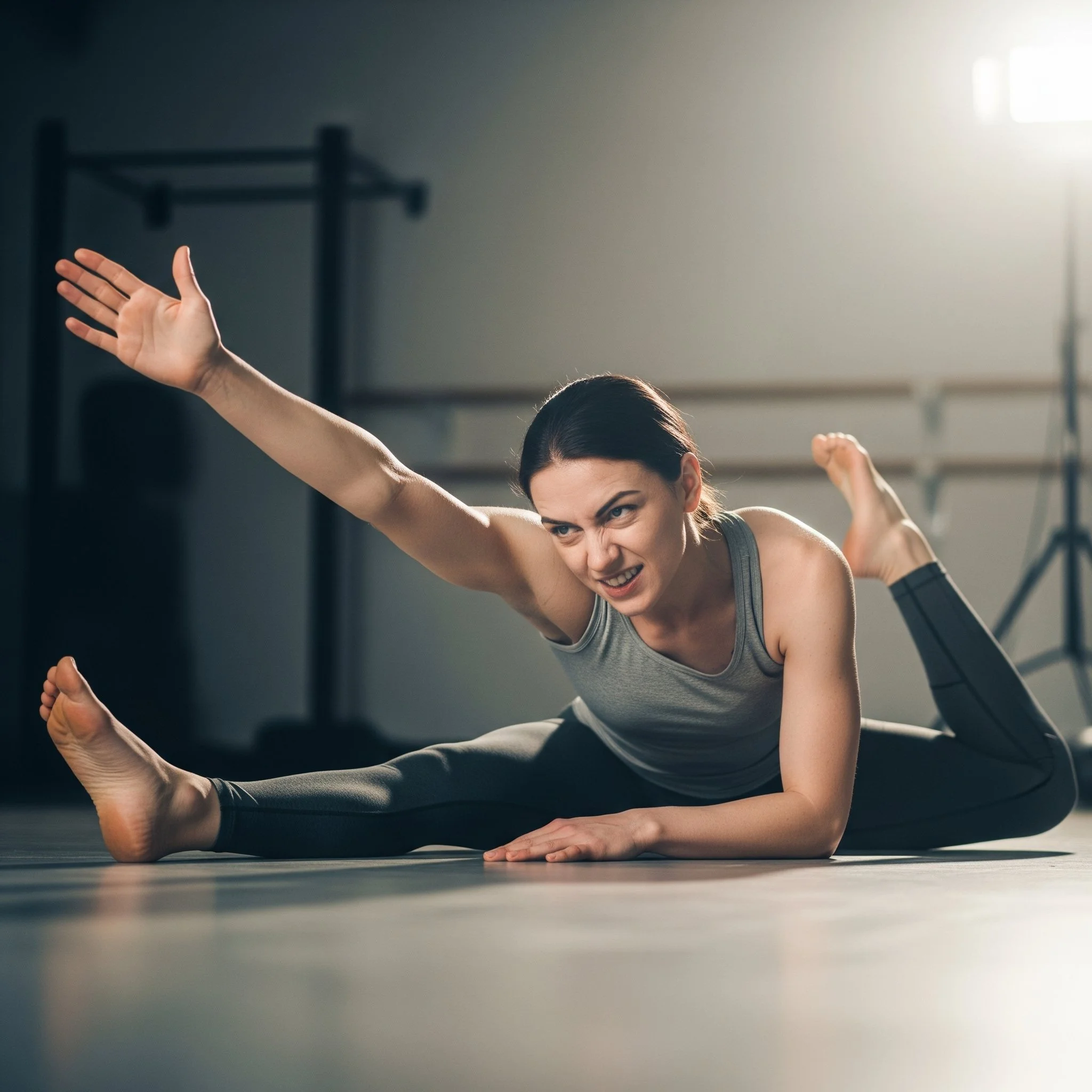The Truth About Stretching: What Really Helps You Move Well
We’ve all been there. You finish a workout, and that muscle feels tight—so what do you do? Stretch, of course. It's the go-to solution we’ve been taught since childhood. But what if I told you that stretching, the way we’ve always known it, might not be as beneficial as you think? In fact, some stretching practices can do more harm than good. Let’s unravel the truth about stretching, how it works, and how you can apply it to your movement practice at Qi Movements for better results.
Stretching Myths: What Stretching Doesn’t Do
Stretching is often thought to be a magic bullet for preventing injury, improving flexibility, and boosting performance, but that’s not always the case. Here are the myths we need to debunk:
Myth #1: Stretching Prevents Injury
We’ve all heard the advice: “Stretch to avoid injuries.” The truth? Static stretching doesn’t prevent injuries. In fact, research shows it doesn’t significantly lower the risk of injury during activity. While stretching may reduce muscle soreness, it doesn’t shield you from potential injuries on the field or in daily activities.
Myth #2: Stretching Increases Performance
Stretching is often recommended to “loosen up” before a big performance or workout, but here’s the kicker: Static stretching before intense activity can actually reduce your performance! It decreases muscle strength and power output. So, while stretching can be beneficial for flexibility, it doesn’t give you the boost you need when performing explosive movements, like sprinting or jumping.
Myth #3: Static Stretching is an Effective Warm-Up
You’ve probably heard that you should stretch before exercising to warm up your muscles. But static stretching actually has the opposite effect when done before physical activity. Stretching cold muscles can increase your risk of injury rather than preparing them for movement. Instead, focus on warming up with light, dynamic movements to get the blood flowing and prepare your body for more intense exercise.
Myth #4: Stretching Always Improves Flexibility
Yes, stretching can temporarily improve range of motion, but it doesn’t guarantee long-term flexibility gains. In some cases, stretching can stretch the muscles but not change the underlying structures, like ligaments or joint capsules. So while you may feel more flexible right after stretching, it doesn’t always translate into lasting improvements.
Myth #5: More Stretching Equals Better Results
Stretching for longer periods or repeating stretches multiple times doesn’t necessarily give better results. Studies suggest that doing static stretches for longer than 15 seconds or repeating them more than four times doesn’t lead to greater flexibility gains and can even hinder performance. Less really is more when it comes to stretching.
Myth #6: Stretching Helps With Soft Tissue Injuries
Stretching may help in certain cases, but it's not a cure-all for soft tissue injuries. Particularly for injuries like muscle or tendon strains, static stretching can make things worse if not paired with proper rehabilitation techniques. A balance of dynamic and pre-contractile stretching is more effective than static stretching alone.
Myth #7: Stretching Works for Everyone
Not everyone benefits equally from stretching. Some individuals may have structural limitations (e.g., joint capsules, ligaments) that cannot be changed through stretching. Stretching should be tailored to an individual’s needs and goals. A detailed assessment of the body’s flexibility and mobility requirements is key before embarking on a stretching routine.
The Truth About Stretching: What Actually Happens in Your Body
Now that we’ve busted some myths, let’s dive into what’s really happening when you stretch.
Think of your muscles like intricate spaghetti noodles. Inside each muscle fiber, there are tiny structures called sarcomeres—imagine them as strands of spaghetti. When you stretch a muscle, these sarcomeres slide past each other, elongating the muscle. However, they don’t just stretch indefinitely. The connective tissue surrounding the muscle fibers also plays a role in lengthening the muscle during stretching.
But here’s the key: The protective mechanisms in your body, such as muscle spindles and Golgi tendon organs, are constantly monitoring how far your muscles stretch. They protect you from overstretching by signaling when the tension becomes too much. So, if you push your muscles too far, these systems work to prevent injury by signaling your body to stop stretching.
Dynamic Stretching: The Safer, More Effective Option
At Qi Movements, we believe that preparation is key—and that’s where dynamic stretching comes in. Imagine you’re warming up a rubber band. If you pull it too quickly, it snaps. But if you gently stretch it in and out, it becomes more flexible over time. This is the idea behind dynamic stretching. It involves controlled, oscillating movements, gradually increasing the range of motion. Dynamic stretching helps improve flexibility, increase circulation, and activate muscles in a safe way.
At Qi Movements, we use pendulum stretches, a dynamic technique that combines the best of both worlds: it moves your muscles in and out of stretches while respecting the body’s natural range. This approach not only increases flexibility but also ensures that muscles stay strong, balanced, and injury-free.
The Power of Pre-Contractile Stretching
If you’re aiming for greater flexibility, pre-contractile stretching is where the magic happens. This technique, known as PNF (Proprioceptive Neuromuscular Facilitation) or PIR (Post-Isometric Relaxation), involves contracting the muscle before stretching it. Think of it like winding a spring and then releasing it—by first contracting the muscle, you set it up for a more effective and safer stretch. This technique has been shown to increase flexibility without sacrificing muscle strength or performance.
If You Want Less Tension in Your Body, Learn to Breathe Better
At Qi Movements, we believe that proper breathing is foundational to reducing tension in the body. When we breathe correctly, we activate our parasympathetic nervous system, which promotes relaxation and reduces stress. The key to breathing well lies in two powerful techniques: nasal breathing and diaphragmatic breathing.
Nasal Breathing:
Breathing through your nose instead of your mouth has a significant impact on how your body responds to stress and tension. Nasal breathing helps regulate airflow, promotes deeper, slower breathing, and filters the air entering the body, which allows for better oxygen absorption. It also activates the diaphragm more effectively, allowing for a deeper connection to your breath and the reduction of tension in the chest and neck.
Diaphragmatic Breathing:
Diaphragmatic breathing—also known as belly breathing—engages the diaphragm and encourages full expansion of the lungs. When you breathe deeply and allow your diaphragm to fully engage, you reduce tension in the upper body and activate the core muscles. This type of breathing is essential for releasing tightness and creating a calming effect throughout your body.
By practicing nasal and diaphragmatic breathing, you will not only reduce the physical tension in your body but also activate your parasympathetic nervous system, helping you stay relaxed and present.
Master the Qi Lunge: The Ultimate Stretch Alternative
When it comes to eliminating tension, especially in the lower body, the Qi Lunge is more effective than any stretch. Why? Because it reciprocally loads every muscle from your toes to your spine, creating a strong foundation for movement and preventing unnecessary tension in your body.
The Qi Lunge is a dynamic movement that not only stretches but strengthens and stabilizes your entire lower body. Here’s why it works:
Loading the Spine, Hip, Knee, Ankle, Foot, and Toes
In the Qi Lunge, your body is loaded from the ground up. As you lower into the lunge, the muscles in your feet, ankles, knees, hips, and spine work together to stabilize and control the movement. This means that the foot tripod—the three points of contact between your foot and the ground (the heel, the ball of the foot, and the pinky toe)—plays a crucial role in evenly distributing the load through your body.
The Foot Tripod and Its Importance
The foot tripod is essential in ensuring proper alignment and balance during the lunge. By grounding your foot through the tripod, you create stability and prevent unnecessary strain on your knees, hips, and lower back. This supports the entire kinetic chain, helping you move with greater efficiency and reducing tension that would otherwise build up in the lower back and legs.
Reciprocal Loading of the Lower Body
As you move through the Qi Lunge, your body performs a reciprocal load, meaning the muscles on one side of your body (e.g., your glutes and quads) contract while the muscles on the other side (e.g., hip flexors and hamstrings) lengthen. This balance of contraction and lengthening ensures that all the muscles are working in harmony, improving mobility, reducing tension, and preventing stiffness in the lower back, hips, and legs.
This dynamic, integrated approach to loading muscles and joints is far more effective than simply holding a stretch. With the Qi Lunge, you engage and strengthen the muscles, preventing tension from building up in the first place.
The Stretching Trap: Why More Flexibility Isn’t Always the Solution
It’s easy to think that the more flexible we are, the better off we’ll be. After all, flexibility is often celebrated in fitness and wellness, and activities like yoga and stretching are touted as ways to improve mobility and relieve tension. But here’s the truth: The most flexible people often don’t feel stable in their bodies. In fact, they can feel more anxious and less secure in their movements. Why? Because flexibility alone isn’t the key to stability—and sometimes, it can make things worse.
Lisa's Story: A Yoga Instructor's Journey
Take Lisa, for example. Lisa was a yoga instructor who could bend over like a paper clip and place her palms flat on the floor. She was proud of her flexibility, as many flexible people are. The problem? Her back was a straight line, instead of forming the shape of a comma, which is ideal for multisegmental load sharing off the spine. When you’re stretching like this, the spine isn’t properly supported—it's simply hinging at one vertebra at the sacrum.
Lisa had chronic back pain. Despite her impressive flexibility, she wasn’t stable in her spine, and every time she tried to relieve the pain with more yoga or stretching, it only made things worse. She was hypermobile, meaning her joints were loose and lacked the necessary muscle stabilization to protect her spine. Her yoga practice was stretching her further into this instability, causing more pain.
When Lisa started training with us at Qi Movements, we introduced her to our neurodevelopmental warm-up sequence, taught her how to properly align her spine, how to hip hinge correctly, and how to perform the Qi Lunge. Almost immediately, her back pain began to subside. The key wasn’t more stretching—it was more strength and control.
Lisa’s story is a great reminder: People with chronic back pain often stretch their hamstrings to the point of destabilizing their pelvis, which exacerbates their back pain. Stretching is not the solution. Instead, by focusing on strengthening the muscles that support your spine and pelvis, you can reduce tension and prevent pain from building up.
The Solution: Stability and Motor Control, Not Flexibility
So what’s the real solution? If stretching and yoga aren’t helping you feel stable, it’s time to focus on stability and motor control. These are the foundational elements you need to feel grounded and in control of your body. Once you have stability and control, then you can load your body with strength to enhance those qualities.
Strength training alone won’t fix instability—it’s about first teaching your body how to stabilize itself. This means engaging the right muscles, activating your core, and learning how to move with proper alignment. Once you’ve built this motor control, adding strength training on top becomes a tool to solidify and enhance those patterns.
Think of it like building a house. First, you need a solid foundation (stability and motor control). Once that’s in place, you can start adding more layers (strength) to make the house even stronger. Without the foundation, the structure will crumble.
By focusing on stability and motor control first, you create a more resilient and controlled body that can then benefit from strength training. This approach teaches your muscles how to properly support your joints, allowing for better movement, improved performance, and ultimately, less tension in your body. When you add strength training to a body that’s already stable and controlled, you’re building a powerhouse that’s ready for anything.
Just Because It Feels Good, Doesn’t Mean It’s Good For You
Let’s be real: stretching can feel good. The deep pull in your muscles, the release of tension, the calming sensation—it’s hard not to feel like it’s doing something positive for your body. But just because something feels good in the moment, doesn’t mean it’s the best thing for you in the long run.
Think of it this way: Heroin feels good—it provides an intense sense of euphoria, but does that mean it’s good for you? Of course not. The temporary pleasure is far outweighed by the devastating consequences that come with it. Similarly, stretching might give you that short-term relief from tension, but it’s not always serving your body in the way you think.
Stretching, particularly static stretching, can provide temporary comfort, but it doesn't always address the underlying issue. When you stretch without stabilizing or strengthening the muscles first, you may be creating a false sense of relief. It’s like applying a quick fix that only masks the real problem—muscular instability or lack of motor control. The relief feels good, but it’s not solving the root cause of your discomfort.
Just like heroin, the initial "feel-good" effect can become a crutch. You keep reaching for it to ease the discomfort, but in doing so, you perpetuate the issue, weakening your body’s true ability to move well and support itself.
So, ask yourself: If something feels good in the moment, but doesn’t support long-term health or stability, should you keep doing it? Stretching alone may feel good, but for lasting change, you need to address the root cause of tension by focusing on stability, motor control, and strength.
The Final Takeaway: Breathe Well, Move Well, Stretch Less
At Qi Movements, we believe in a holistic approach to movement. Stretching can be effective when done properly, but when combined with quality breathing and the Qi Lunge, you can reduce tension, improve flexibility, and optimize your body’s performance without the need for excessive static stretching.
Remember: it’s not about how long you stretch—it’s about moving with purpose, breathing effectively, and engaging your muscles in a balanced way. Mastering strength training alongside proper breathing will not only make you feel more stable, but it will also support you in a way that stretching alone can’t. You’ll create lasting, healthy movement patterns that serve you every day.
So, next time you think about stretching, ask yourself, “Why am I doing this?” and then choose the technique that best supports your goal. Stretch less, breathe better, and move with strength—and you’ll never have to stretch again.
Yours in wellness,
Brien & Dre
Qi Movements – Move well. Live well.™

